Service hotline
+86 0755-83044319
release time:2025-06-11Author source:SlkorBrowse:4295
In an era where surgical robots achieve precision within 0.1 millimeters and nano-targeted drug delivery systems enter clinical trials, the reliability of medical electronic devices directly impacts patient safety. As a breakthrough in precision protection, the SLPRT5V0U2X electrostatic protection diode is building an invisible electromagnetic shield for medical robots, redefining the protection standards for medical equipment with its ultra-low junction capacitance and high clamping voltage.
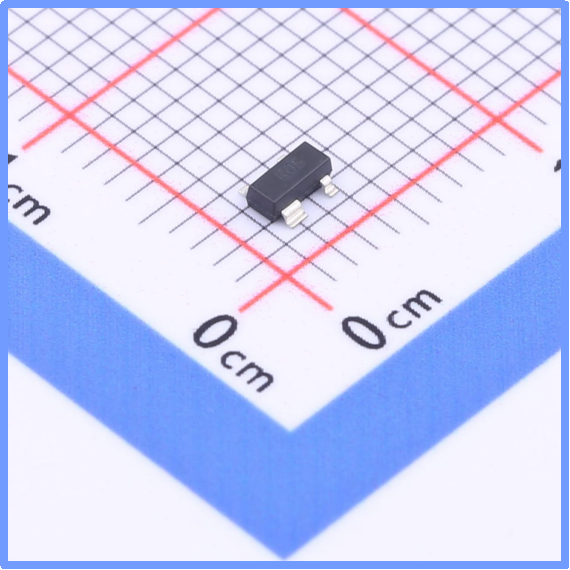
Slkor Electrostatic Discharge Diode SLPRT5V0U2X product photo
Modern operating rooms are hubs for precision electronic devices: frequent switching of surgical lights generates transient overvoltages, medical plastic products can accumulate frictional electrostatic charges of several thousand volts, and winter’s dry conditions can push human body static (HBM) levels to 15kV. These electrostatic sources pose multiple threats to the core components of medical robots:
1. Imaging Systems: The CMOS sensors of endoscopic cameras are vulnerable to dark current generation from electrostatic impacts, leading to increased image noise.
2. Control Modules: When the I/O interfaces of a surgical robot's main control chip encounter ESD events, it could trigger program crashes or system freezes.
3. Communication Buses: Static interference can cause data loss and packet drops on medical device communication buses like RS-485 and CAN.
4. Power Systems: If the protection circuit of a lithium battery management system fails, it could lead to overheating or even fire risks.
Statistics from a top hospital show that medical robots without protection experience an average of 1.7 ESD-induced system failures per year, with repair costs exceeding $5,000 per incident, potentially leading to indirect losses such as surgical delays.
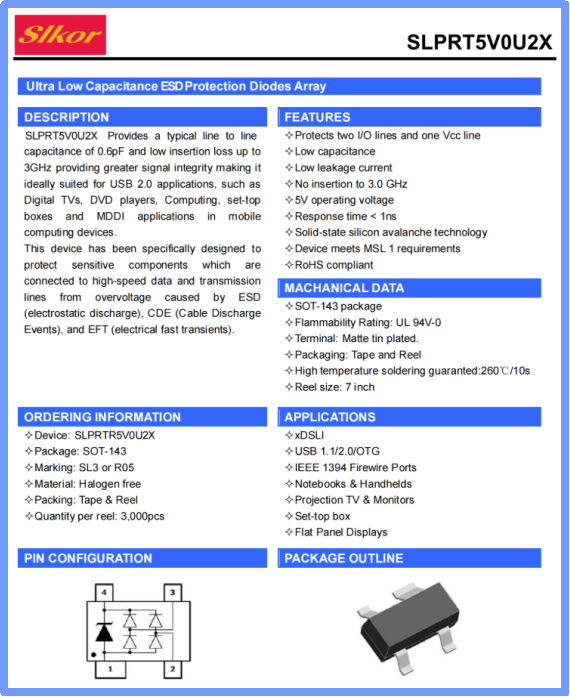
Slkor Electrostatic Discharge Diode SLPRT5V0U2X specification
The SLPRT5V0U2X’s electrical characteristics perfectly match the protection needs of medical robots:
- 5V Working Voltage (VRWM): Precisely matches the I/O level standard of mainstream medical control systems and can be directly deployed in devices like the Da Vinci surgical robot and neuro-interventional robots.
- 0.6pF Ultra-Low Junction Capacitance (CJ): Shows its unique value in critical data transmission paths. Experiments show that at 1GHz, the device can control signal attenuation within 0.5dB, ensuring high-fidelity medical image data transmission.
- 15.5V Clamping Voltage (VC) and 1μA Ultra-Low Leakage Current (IR): Provide dual protection for the power system. During surge tests on the motor startup and shutdown of an interventional robotic system, the device keeps the 5V power rail voltage fluctuation within ±3%, with a 70% faster response time compared to traditional TVS solutions.
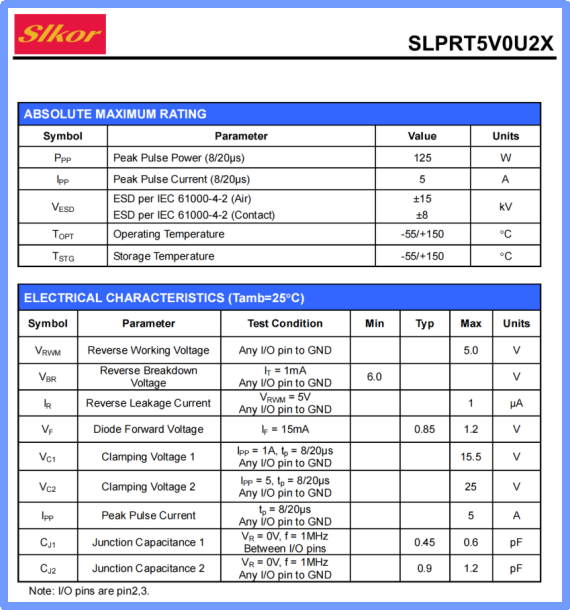
Parameters of Slkor Electrostatic Discharge Diode SLPRT5V0U2X
The design philosophy of medical robots is evolving toward "small volume, high integration," which imposes strict spatial requirements on protection devices. The SLPRT5V0U2X’s SOT-143 package (3.6mm × 2.8mm) is 40% smaller than the traditional SOT-23 package and can be directly mounted on the joint modules of surgical robotic arms, providing ESD protection in a limited 2mm² space.
The technological advantages of the SLPRT5V0U2X are driving a paradigm shift in medical robot protection systems. Traditional solutions rely on passive strategies such as "tiered protection + fuses," whereas this device uses active clamping technology for nanosecond-level response, advancing protection from the system level to the chip level. In the navigation module of an orthopedic surgical robot, this shift allows the protection circuit to be directly integrated into the main control chip's surroundings, reducing wiring length by 60%, parasitic inductance by 80%, and significantly enhancing the system's anti-interference capability.
Of particular note is its bidirectional symmetric structure design, which simultaneously protects differential signal pairs. In the Gigabit Ethernet interface of medical imaging devices, this feature reduces the communication bit error rate from 2.3×10⁻⁵ to 4.7×10⁻⁹ during ±15kV contact discharge testing, improving data transmission stability by three orders of magnitude. A report from a third-party testing agency showed that deploying this device increased the electromagnetic compatibility (EMC) pass rate of medical equipment from 72% to 98%.
As medical robots evolve toward more flexible and intelligent systems, ESD protection devices are extending from mere protective functions to system health management. This trend aligns with the development of "digital twin" technology in medical equipment, driving the shift from passive response to active prevention in protection systems.
In the new normal of AIoT and 5G technology convergence, the miniaturized and intelligent protection solutions represented by the SLPRT5V0U2X are building an "adaptive immune system" for the electronics of medical robots. When each critical node has its own autonomous protection capability, the robustness of the entire medical system will experience exponential improvement. This may well be one of the key technological building blocks towards achieving true zero-failure, precision healthcare.
Slkor has research and development offices in Busan, South Korea, Beijing, China, and Suzhou, China. Most of the wafer manufacturing and packaging and testing are carried out within China. The company employs and collaborates with individuals and organizations worldwide, with a laboratory for product performance and reliability testing and a central warehouse located at its headquarters in Shenzhen. Slkor has filed for over a hundred invention patents, offers more than 2,000 product models, and serves over ten thousand customers globally. Its products are exported to countries and regions including Europe, the Americas, Southeast Asia, and the Middle East, making it one of the rapidly growing semiconductor companies in recent years. With well-established management systems and streamlined workflows, Slkor has rapidly enhanced the brand awareness and reputation of its "SLKOR" brand through its outstanding quality and standardized services. Its product range includes three major series: diodes, transistors, and power devices, with recent introductions of new products such as Hall elements and analog devices, expanding its presence in sensors, Risc-v microcontrollers, and other product categories.

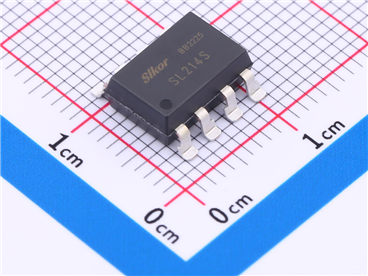
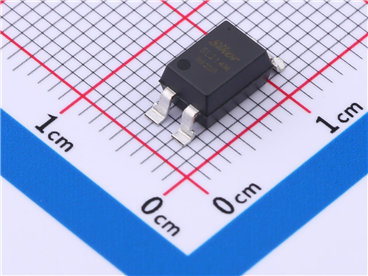
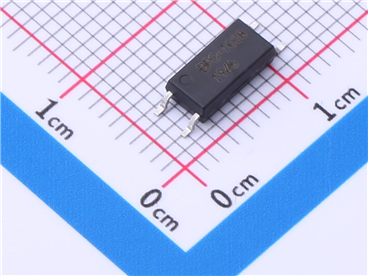
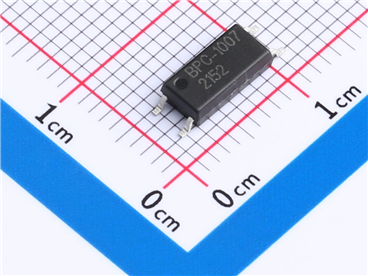




Site Map | 萨科微 | 金航标 | Slkor | Kinghelm
RU | FR | DE | IT | ES | PT | JA | KO | AR | TR | TH | MS | VI | MG | FA | ZH-TW | HR | BG | SD| GD | SN | SM | PS | LB | KY | KU | HAW | CO | AM | UZ | TG | SU | ST | ML | KK | NY | ZU | YO | TE | TA | SO| PA| NE | MN | MI | LA | LO | KM | KN
| JW | IG | HMN | HA | EO | CEB | BS | BN | UR | HT | KA | EU | AZ | HY | YI |MK | IS | BE | CY | GA | SW | SV | AF | FA | TR | TH | MT | HU | GL | ET | NL | DA | CS | FI | EL | HI | NO | PL | RO | CA | TL | IW | LV | ID | LT | SR | SQ | SL | UK
Copyright ©2015-2025 Shenzhen Slkor Micro Semicon Co., Ltd